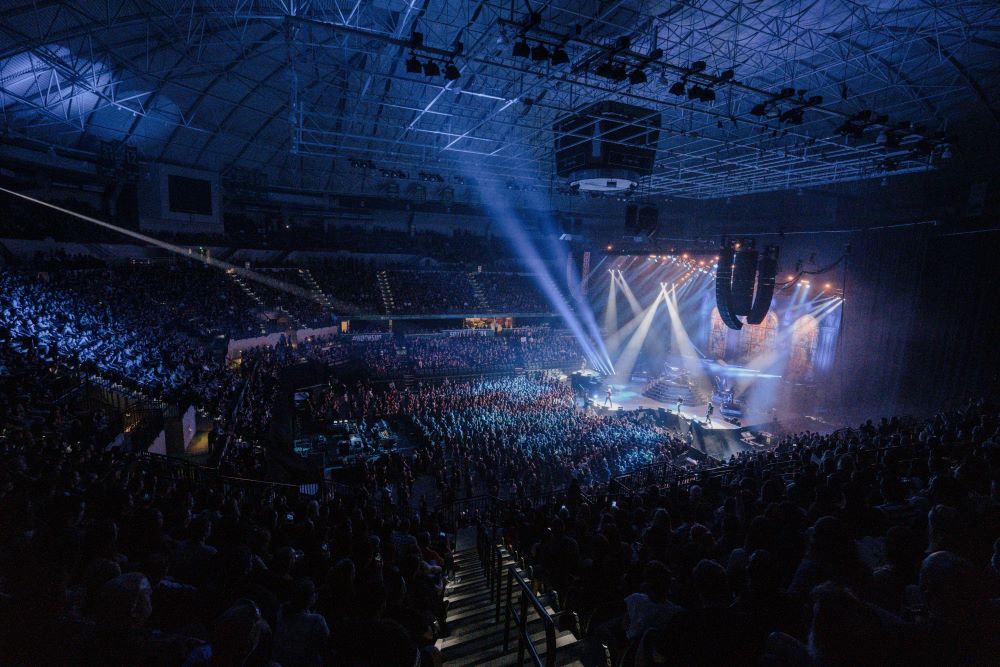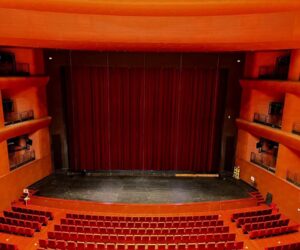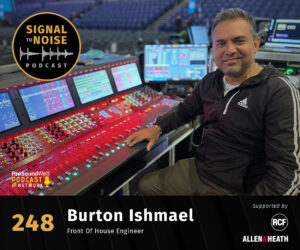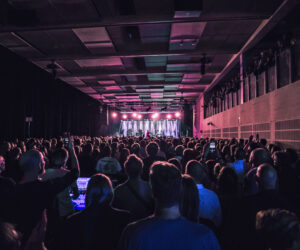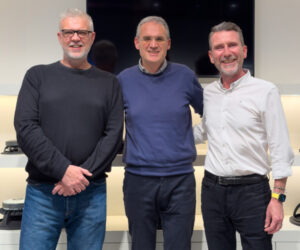Swedish rock band Ghost returned to the road as the solo headliner for a late summer continuation of “Imperatour,” supported by a main sound reinforcement system headed by Meyer Sound PANTHER large-format line arrays and supporting components.
On the earlier USA leg, Ghost and then co-headliner Volbeat had carried a Meyer Sound LEO Family system but the switch was made for the latest set of dates. The systems engineer (SE) for both tour legs was Michael Lawrence, whose other hats include SE/FOH mixer for Miguel, senior instructor for Rational Acoustics, and co-host of the ProSoundWeb Signal to Noise podcast. Ghost’s long-time FOH engineer, Dave Nutbrown, was also back for the second round and he recommended taking out another LEO Family rig.
“The band had been in Europe for a couple of months in between, and the system we’d had earlier was booked for another client,” says Lawrence. “We checked in with Josh Osmond at UltraSound, and he said he could help with another LEO Family rig, but then mentioned that their new PANTHER system — which was out with Dead & Company for most of the summer — would be available. I assumed it would cost a bit more, but when the quote from UltraSound came in, we were thrilled that the bottom line for PANTHER was actually less.”
Lawrence optimized the rig for each venue, hanging as much power as the space allowed. For larger arenas, a typical configuration would fly 16 PANTHER line array loudspeakers for each of the left and right main hangs, all with the “L” narrow (80-degree) horn to maximize gain before feedback when the band uses a thrust that projects in front of the arrays. The 16 wide coverage (110-degree) PANTHER loudspeakers were all flown in the side hangs, with eight W cabinets over four L cabinets.
“Dave and I are always talking about ways to make things better for the audience,” says Lawrence, “and on this tour, we did some non-traditional things with the wide boxes. Usually, you put them at the bottom of your main hangs to fill in the center. But because the artist spends a lot of time on the thrust, we didn’t want to do that. With the L all the way down, we got about another 4 dB on the vocal mic when he was in front of the PA.
“As for the side hangs, putting the wide boxes on top just makes sense when you look at the shape of the side hang coverage in an arena. We did a MAPP 3D prediction, and it wasn’t just a little bit better in the upper corners, it was a lot better. We want the people in those seats to have the best possible experience, not just those in the front. The band really cares about that.”
The balance of the system comprised nine 1100-LFC low-frequency control elements flown per side in a cardioid configuration, bolstered on the floor by cardioid stacks of three 1100-LFC elements per side on the floor and two under the center thrust. Frontfills were eight LEOPARD loudspeakers deployed along the stage and thrust. Optimization and drive were handled by six Galileo GALAXY 816 network platforms linked by a dual redundant AVB network with analog backup.
Lawrence tuned the system for each show to achieve uniformity regardless of the space. “Our basic design is to have the level up no more than 3 dB from FOH to the front row, and down no more than 3 dB at the far back rows,” says Lawrence. “But we still want the tonality to be consistent everywhere in the space, so you feel the low end the same way whether you’re in the front or in the back. We do a lot of work balancing the flown and floor subs to make sure that happens.”
As for the changeover from LEO Family to PANTHER, Lawrence notes,“For me, the PANTHER high-frequency horn has a cleaner impulse, with transients much better preserved. For example, in the first shows, we found we didn’t need nearly as much of the cymbal mics in the mix, and the same for the guitar distortion, where we could pull back that top end of the spectrum there as well. I saw a couple of reviews that said the overall sound was very good.”
Nutbrown concurs, adding, “The transition from LEO-LYON to PANTHER has been seamless, and the fact that we could use only one set of parameters for the whole hang reduced the programming time immensely. The tour went extremely well, and everyone seems happy with the results. The collective impression is that, with PANTHER, Meyer Sound has another winner in the audio world.”
The audio team also included PA tech and RF coordinator Michal Kacunel, PA tech Sean McAdam, Ghost monitor engineer Matt Kogle andmonitor tech Sam Boone. The “Imperatour” continuation leg launched in San Diego on August 26 and wrapped in Green Bay, Wisconsin on September 23.


